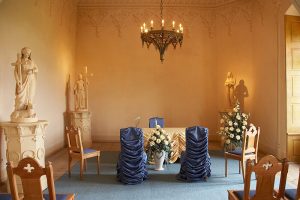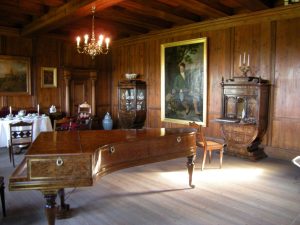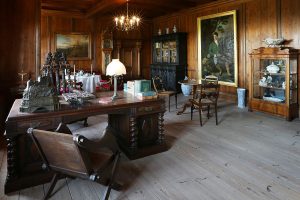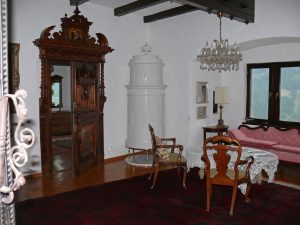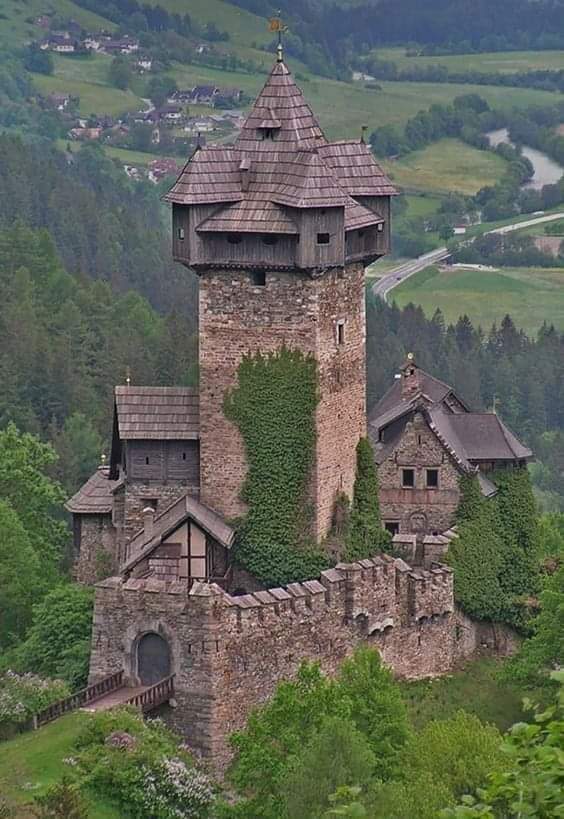
Niederfalkenstein Castle is a medieval castle near Obervellach in Carinthia, Austria. It is part of the larger fortified complex of Falkenstein; while the main fortress of Oberfalkenstein today is in ruins, the lower barbican of Niederfalkenstein is largely preserved.
Niederfalkenstein History
The fortification was erected on a rocky promontory on the slopes of the Reisseck group in the Hohe Tauern mountain range, overlooking the Möll valley east of Obervellach. Niederfalkenstein is 843 meters above sea level.
The ruins of Oberfalkenstein include a Bergfried keep with surrounding moats and the foundations of a Romanesque palace. A chapel dedicated to John the Baptist was first mentioned in 1246, greatly enlarged in the Baroque style in 1772 and is still in use.
The fortification was first mentioned as Valchenstain Castle in an act from 1164. The name may have derived from Proto-Germanic walhaz in terms of a Roman settlement, referring to the descendants of the former Roman city of Teurnia, who had migrated to the remote valley during the Slavic settlement of the Eastern Alps about 600.
The first documented ministerial Gumpoldus de Valchenstein was a legion of Count Engelbert II of Gorizia (Görz), scion of the Meinhardiner dynasty. The Counts of Gorizia also held the office of Vogt of Bendictine Millstatt Abbey and the Lord of Falkenstein established close ties with the monastery.
The Falkenstein dynasty died out around 1300, immediately after two castles were mentioned, Falkenstein “Superiore” and “Inferiore”, which were given in fief by the Counts of Gorizia to various local nobles. On 24 June 1394, Count Henry VI gave the upper castle as a pledge to the Duke of Austria, Albert III of Austria. It was finally kidnapped by Albert’s nephew, Emperor Frederick III in 1460, after defeating Count Giovanni II of Gorizia in the conflict over the inheritance of the extinct Counts of Celje. The lower castle was temporarily held by the Carinthian knight Andreas von Graben, who sold it in 1462.
In 1504 the son of Frederick and successor of Emperor Maximilian I once again ceded the castle as a pledge to Count Giuliano di Lodron, from his wife Apollonia, brother-in-law of the Archbishop of Salzburg Matthäus Lang von Wellenburg. It was bought by Apollonia’s second husband Christoph Frankopan after Lodron’s death in 1510. The countess donated an altarpiece by Jan van Scorel in the parish church of Obervellach, depicting St. Christopher herself and her castle. At the same time, huge funds had to be raised to restore the dilapidated premises. Subsequently, several nobles took over the castle, including the descendants of Gabriel von Salamanca-Ortenburg and the Khevenhüller dynasty, as the locals decayed. When Austrian mountaineer Joseph Kyselak visited the site in 1825, it was largely destroyed.
Today the castle is private property, but can be visited in summer.

